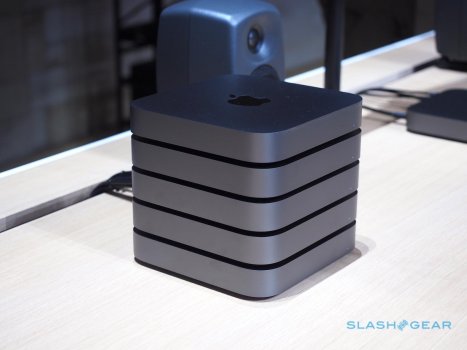A modern take on the G4 Cube,
...would be the Mac Mini (unless Apple want to re-introduce the optical drive). Also, the Mac Cube is largely remembered (rightly or wrongly) as an Epic Fail so I doubt that the branding will resurface.
I suspect the window for the "xMac" affordable desktop "Mac midi" has passed - when Macs were using generic Intel PC components it would have been relatively easy for Apple to have produced a small, desktop Mac with 1-2 PCIe slots based on Mini-ITX or some minor proprietary/cosmetic variation thereof. Apple Silicon doesn't make that
impossible but they can no longer just take Foxconn's finest Mini-ITX offering and stencil an Apple logo on it (OK, it was never
quite that simple, but if the Hackintosh community could do it with zero support, it's would be an easy job for Apple).
Also, a major reason why people wanted an xMac was so that they could choose their own GPU - I'm not sure whether it has been officially declared that MacOS for ASi won't support third-party GPUs or eGPUs full stop, but Apple's initial position seems to be that you won't need them with ASi graphics.
I personally believe the iMac Pro is going to be mothballed outright in the transition or end up replacing the Mac Pro desktop entirely.
Once Apple move to an all-ASi lineup, any distinction between an iMac and an iMac Pro will be whatever Apple define it to be. Since the iMac Pro is already a more modern design (improved cooling, no need to support spinning rust and, for better or worse, no RAM access hatch) it could be moot whether the "iMac" or the "iMac Pro" is the one that has been dropped.
The Core-i/Xeon distinction may or may not have a direct analog in Apple silicon. ECC is something a Mac Pro will need but an Air won't - but making that an exclusive "xeon" feature is Intel's artifice. It will be interesting to see how Apple presents the processor choices in the new range (it seems unlikely that there will be a "one size fits all" ASi processor for everything from a MacBook Air to a Mac Pro - even with "binning" or disabling cores) - they may invent some analog of Intel's "i3/5/7/9" notation and/or "Apple Silicon" vs. "Apple Silicon Pro" but that is all, ultimately, branding who's relation to actual features changes with each generation.
It won't replace the Mac Pro. Apple has to figure out how to throw expansion bays into a tower powered by an ASMac chip or lose the few pro users they have.
The issue is not adding expansion bays
per se - PCIe on ASi won't be an issue, and some PCIe support will be needed to implement Thunderbolt - but that the current Mac Pro has such a
huge number of PCIe slots, enabled by the Xeon W3000 series having 64 PCIe lanes. Similarly with RAM capacity - one reason the 24-28 core version is so expensive is down to using the super-pricey version of the Xeon W300 that supports 2TB RAM.
To directly replace the Mac Pro with Apple Silicon, Apple would need the economic justification to make an ASi SoC with a huge number of PCIe lanes and 2TB RAM support that was massive overkill for everything
except the Mac Pro. Intel have other customers for the Xeon W3000 - Apple only have the Mac Pro - and only Apple know if they're shifting enough Mac Pros to make that worthwhile.
However, Apple didn't start planning the ARM transition yesterday, it was likely already in motion when they specced out the Mac Pro and decided to pitch it at such a high spec. So, presumably, They Have A Plan.
It wouldn't surprise me if the Intel Mac Pro hangs around for a long time (the "true Pro" types who can justify buying it tend to like long-term stability anyway and have already shown that they're prepared/obliged to wait 7 years for an upgrade) and the ASi answer turns out to be something a bit more leftfield that doesn't rely on a single processor supporting shedloads of RAM and PCIe lanes. Maybe some sort of ASi-based "blade computing" system? In 5+ years time, maybe some of the people who currently need 8 PCIe slots etc. will be ready to move on.
...I always wondered if the trashcan would have been more successful if it had launched alongside a more up-to date conventional tower, rather than the already obsolescent (and discontinued in Europe) 5,1. The concept had some merit - but not as a one-size-fits-all solution for every "pro" user.



